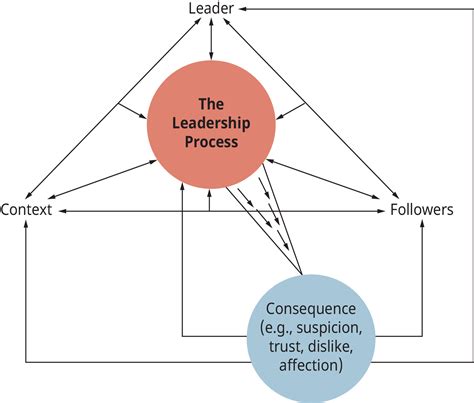The definition of leadership has been a topic of debate for centuries, with various scholars and practitioners proposing different perspectives. In the literature, leadership is commonly defined as the process of influencing and guiding a group or organization to achieve its goals.

Key Elements of Leadership
The literature typically highlights several key elements that characterize leadership:
- Influence: Leaders have the ability to exert influence over others, persuading them to follow their vision and direction.
- Motivation: Leaders inspire and motivate their followers, creating a sense of purpose and commitment within the team.
- Goal-Oriented: Leadership is focused on achieving specific goals and objectives, both in the short- and long-term.
- Communication: Effective leaders communicate their vision, expectations, and strategies clearly and effectively to their followers.
Leadership Theories and Models
Numerous leadership theories and models have been developed over time, each with its own unique perspective on the nature and practice of leadership. Some of the most prominent theories include:
- Trait Theory: Emphasizes the innate qualities and personality traits that make an effective leader.
- Behavioral Theory: Focuses on the specific behaviors that distinguish effective leaders, such as initiating structure and establishing relationships.
- Transformational Theory: Proposes that leaders inspire and motivate followers to transcend their own self-interests and work towards a shared vision.
- Situational Theory: Argues that the most effective leadership style depends on the specific situation and context.
Global Leadership Trends
In recent years, globalization has influenced leadership practices, leading to the emergence of new trends:
- Global Mindset: Leaders are increasingly expected to have a global perspective, understanding cultural differences and the complexities of international business.
- Virtual Leadership: The rise of remote work has necessitated the development of effective leadership strategies for managing and motivating distributed teams.
- Sustainability: Sustainability has become a critical aspect of leadership, as organizations strive to balance economic growth with social and environmental stewardship.
Benefits and Challenges of Leadership
Leadership offers numerous benefits, including:
- Enhanced Performance: Effective leadership improves team performance, productivity, and innovation.
- Increased Employee Engagement: Leaders who inspire and motivate their followers create a more engaged and committed workforce.
- Positive Organizational Culture: Leadership shapes the culture of an organization, promoting values such as trust, collaboration, and growth.
However, leadership also comes with challenges:
- Difficult Decisions: Leaders are often faced with complex and difficult decisions that can have far-reaching consequences.
- Managing Conflict: Resolving conflicts and navigating interpersonal dynamics is an essential aspect of effective leadership.
- Burnout: The demands of leadership can lead to stress and burnout, particularly in high-pressure environments.
Pain Points and Motivations
Leaders often encounter various pain points in their roles, including:
- Lack of Resources: Inadequate resources, such as funding, personnel, or technology, can hinder leadership efforts.
- Resistance to Change: Resistance from followers or stakeholders can make it challenging to implement new strategies or initiatives.
- Lack of Support: Leaders may feel isolated or unsupported when facing difficult challenges or making unpopular decisions.
Motivations that drive leaders include:
- Purpose and Vision: A strong sense of purpose and a clear vision for the future motivate leaders to take action.
- Impact and Legacy: The desire to make a positive impact and leave a legacy motivates leaders to strive for excellence.
- Personal Growth: Leadership provides opportunities for personal growth, development, and learning.
Effective Leadership Strategies
Effective leadership strategies include:
- Setting Clear Goals and Expectations: Leaders should establish clear and attainable goals for their teams and communicate them effectively.
- Empowering Followers: Empowering followers by giving them autonomy and responsibility increases engagement and productivity.
- Providing Feedback and Recognition: Regular feedback and recognition help followers understand their strengths and areas for improvement.
- Leading by Example: Leaders should embody the values and behaviors they expect from their followers.
- Continuous Learning: Effective leaders continuously seek opportunities for learning and development to enhance their skills and knowledge.
Common Mistakes to Avoid
Common mistakes to avoid in leadership include:
- Micromanagement: Overly controlling or supervising followers can stifle creativity and motivation.
- Lack of Communication: Poor communication leads to confusion, misunderstandings, and decreased trust.
- Favoritism and Bias: Treating followers unequally or biasedly can damage morale and team cohesion.
- Ignoring Feedback: Failing to listen to feedback from followers can lead to missed opportunities for improvement.
- Burnout: Leaders should prioritize self-care and avoid overworking to maintain their effectiveness.
Conclusion
The definition of leadership as the process of influencing and guiding a group or organization to achieve its goals is widely accepted in the literature. Effective leadership involves key elements such as influence, motivation, goal-orientation, and communication. While leadership theories and models provide different perspectives, they all emphasize the importance of leaders in shaping the direction and performance of organizations. In the modern era, global leadership trends are influencing leadership practices, with an emphasis on global mindset, virtual leadership, and sustainability. Despite the challenges, effective leadership strategies empower followers, set clear goals, provide feedback, lead by example, and promote continuous learning. By avoiding common mistakes and addressing pain points, leaders can create a positive and productive work environment that fosters innovation, engagement, and success.
